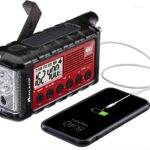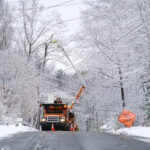When it comes to staying informed about severe weather conditions and emergencies, NOAA alerts play a pivotal role in providing timely and critical information. The National Oceanic and Atmospheric Administration (NOAA) operates a sophisticated alert system designed to keep the public safe by delivering weather warnings and other important alerts. In this blog post, we will delve into what these alerts are, how they work, and why they are essential for your safety.
What are NOAA Alerts?
NOAA alerts, issued by the National Weather Service (NWS), are notifications that provide crucial information about various environmental threats. These alerts cover a range of situations, including severe weather events, natural disasters, and other emergencies. The goal is to keep the public informed and safe by offering timely warnings and guidance.
Types of NOAA Alerts
- Weather Warnings:
NOAA issues weather warnings for a variety of conditions, such as tornadoes, hurricanes, severe thunderstorms, floods, and winter storms. These warnings are designed to give people in affected areas enough time to take precautionary measures and seek shelter. - AMBER Alerts:
In cases of child abductions, the AMBER Alert system is activated to rapidly disseminate information about the missing child. This collaborative effort involves law enforcement agencies, broadcasters, transportation agencies, and the wireless industry to help locate and recover abducted children. - Environmental Hazards:
NOAA alerts also cover environmental hazards such as chemical spills, radiological emergencies, and other threats to public safety. These alerts provide information on protective actions individuals should take to minimize risks.
How Do NOAA Alerts Work?
These alerts are disseminated through the Emergency Alert System (EAS), a national public warning system that enables the President to address the American people during emergencies. The EAS is also used by state and local authorities to send alerts regarding weather emergencies, imminent threats, AMBER Alerts, and local incident information.
Additionally, NOAA Weather Radio (NWR) broadcasts continuous weather information directly from the nearest NWS office. These broadcasts include up-to-date weather forecasts, warnings, and other hazard information. Many emergency weather radios are equipped to receive NWR broadcasts, ensuring that individuals have access to real-time information.
Why Are They Essential?
- Timely Warnings:
NOAA alerts provide timely warnings that are crucial for preparedness and response. Whether it’s a rapidly approaching tornado or an imminent hurricane, these alerts give individuals and communities the opportunity to take immediate action to protect themselves. - Public Safety:
The primary objective of NOAA alerts is to enhance public safety. By receiving accurate and timely information, individuals can make informed decisions to safeguard their lives and property. - Community Preparedness:
They contribute to community preparedness by encouraging individuals to have emergency plans, assemble emergency kits, and stay informed about potential threats. Prepared communities are more resilient in the face of emergencies.
Conclusion
In a world where unforeseen emergencies and natural disasters are a reality, NOAA alerts stand as a critical tool in ensuring public safety. By understanding what they are and how they work, individuals can take proactive steps to stay informed and prepared for whatever Mother Nature may bring. Embrace the power of knowledge and make them an integral part of your emergency preparedness strategy.






